By Jean Rydberg
All photos © 2024 John Brigham
Advances in technology in the 2020s have allowed camera manufacturers to create cameras that are compact yet tremendously powerful. The latest generation of compact mirrorless cameras – particularly from Canon, Sony, and OM System – have made professional quality imaging accessible the widest range of consumers since the introduction of digital photography.
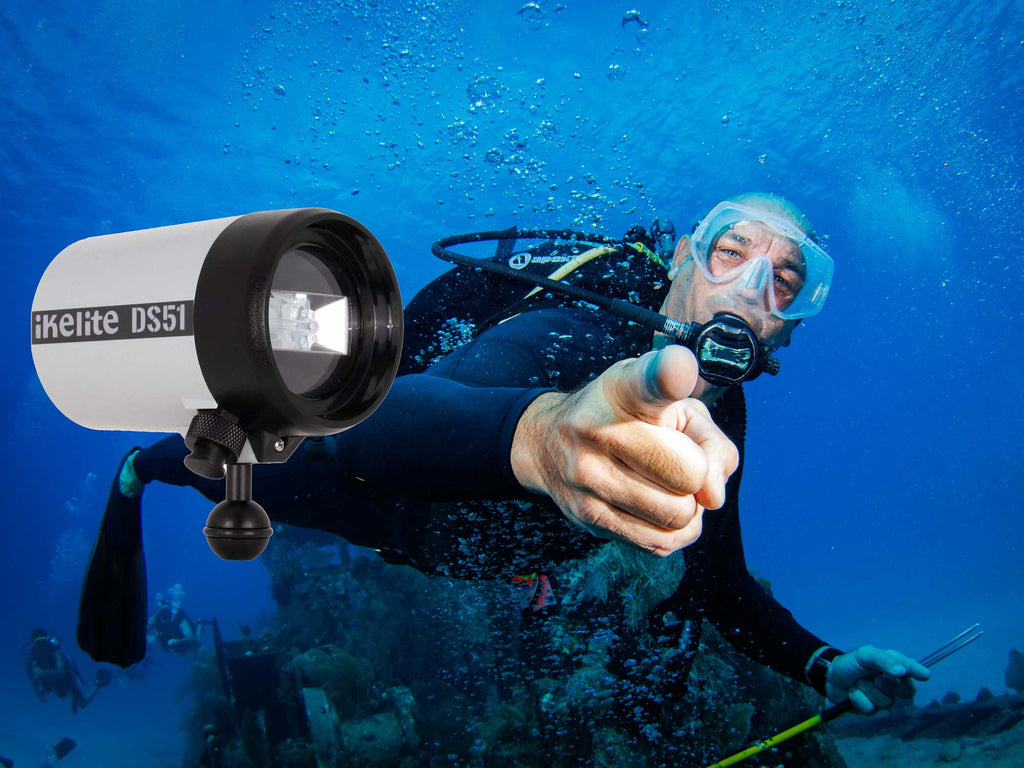
A strobe is necessary to bring out natural skin tones, reds, oranges, yellows, and purples underwater. All photos on this page were taken with dual DS51 strobes.
We face unique lighting challenges underwater. We need auxiliary light sources even when there is enough ambient light to take a photo. Strobes are essential to depict accurate color and improve clarity in underwater settings. Lighting is one of the places you don’t want to scrimp if you’re going for great results.
Lightening the Lighting Load
Professional quality strobes have been a mainstay in our gear bag. Regardless of the camera system we take out, we’re typically shooting at least dual DS160 II strobes, and more commonly dual DS230 or DS232 strobes, extended on two-segment Wide Angle Ball Arms.

Professional grade strobes balance out full frame camera systems, but can be overkill if you want to travel light with some of the amazing compact mirrorless cameras that are now available.
But as our camera systems get smaller it also becomes tempting to start shooting smaller strobes. Dual DS51 II strobes with Compact Ball Arms were a natural choice when shooting one of our favorite compact mirrorless systems - the Canon EOS R100. All of the photos on this page came from that system when we dove with Epic Divers in Grand Cayman.
The first major difference we noticed was the handling. The DS51 II is smaller than the size of a soda can. The fact that they are extremely light and compact is noticeable both above and below the waterline. Small strobes are really easy to push through the water and when coming from a larger camera system, it definitely seems like you’ve started moving a lot faster.
Shooting with a Compact Ball Arm
The Compact Ball Arm is comprised of a straight section with two clamps (the joints between the balls). It makes it really easy to position the strobes either spread far away from the lens for wide angle, or pulled in tight for macro. Compared to arms with three clamps, the compact style is less cumbersome to maneuver and provides plenty of flexibility in positioning.
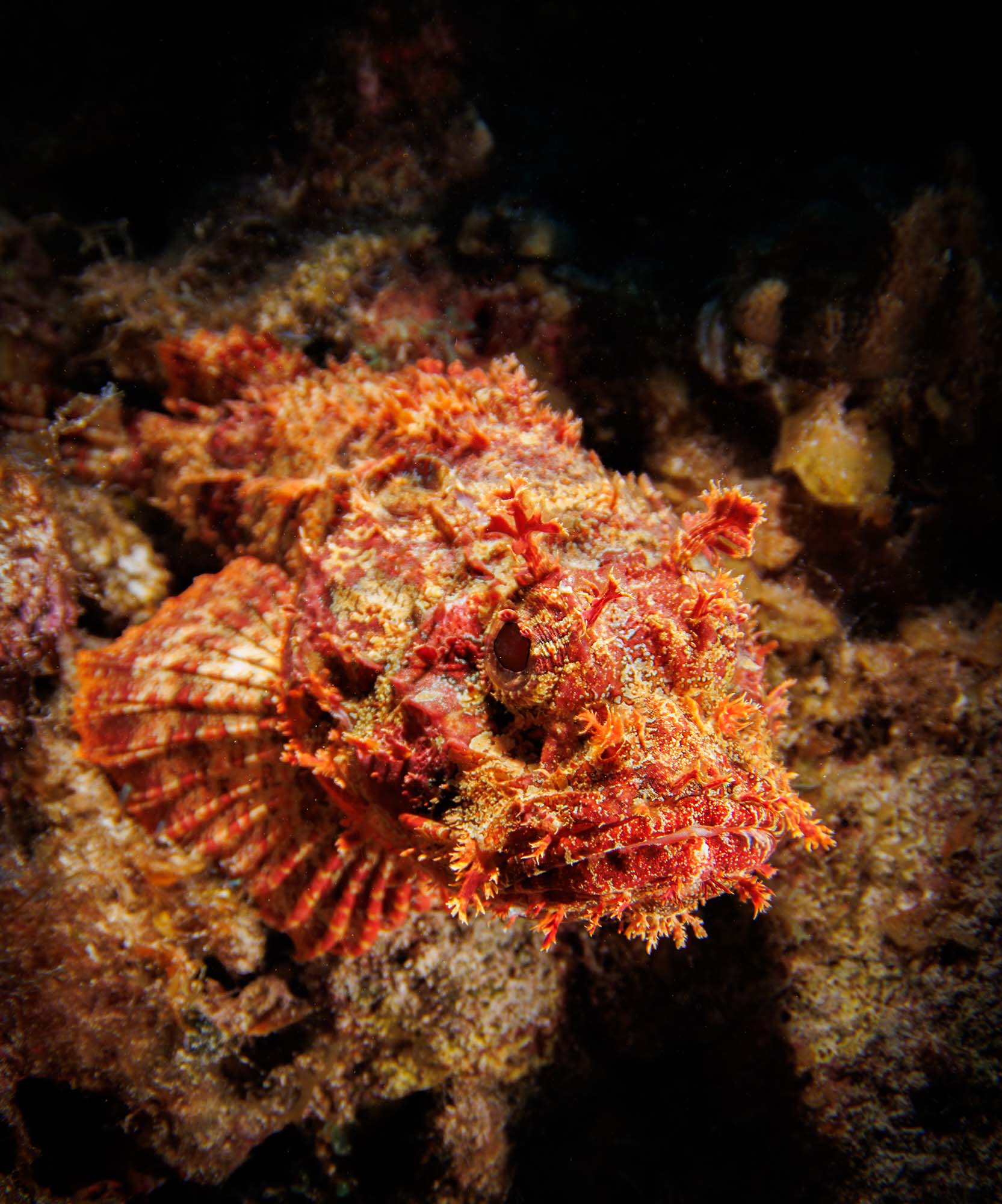
Every strobe can shoot macro photography where you need such a narrow coverage angle. Smaller strobes have the advantage of fitting into tighter spaces.
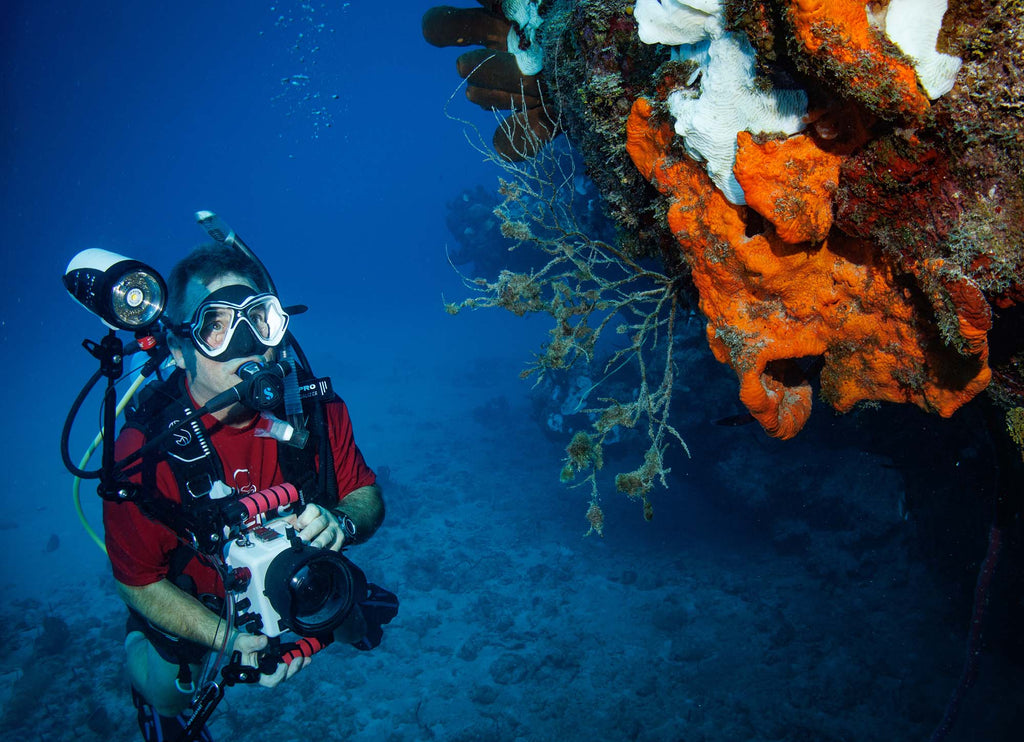
Dual DS51 strobes bring out the colors in the orange sponge and make Steve Miller’s red rashguard pop. A compact arm can spread your strobes wide enough to light a relatively wide scene and avoid backscatter.
When shooting dual strobes – professional grade or compact – it’s super comfortable to connect the arms with a cable top grip. The best way to connect the grip is to the center slot of the Compact Ball Arm, which allows it to automatically slide out of the way when you shoot and gives you extra room to shoulder-carry the system on the surface.
More Than a Macro Strobe
Most of us don’t want to travel with one set of strobes for macro photography and a second set for wide angle… Especially when using some of the powerful cameras that can shoot both macro and wide angle on the same dive.
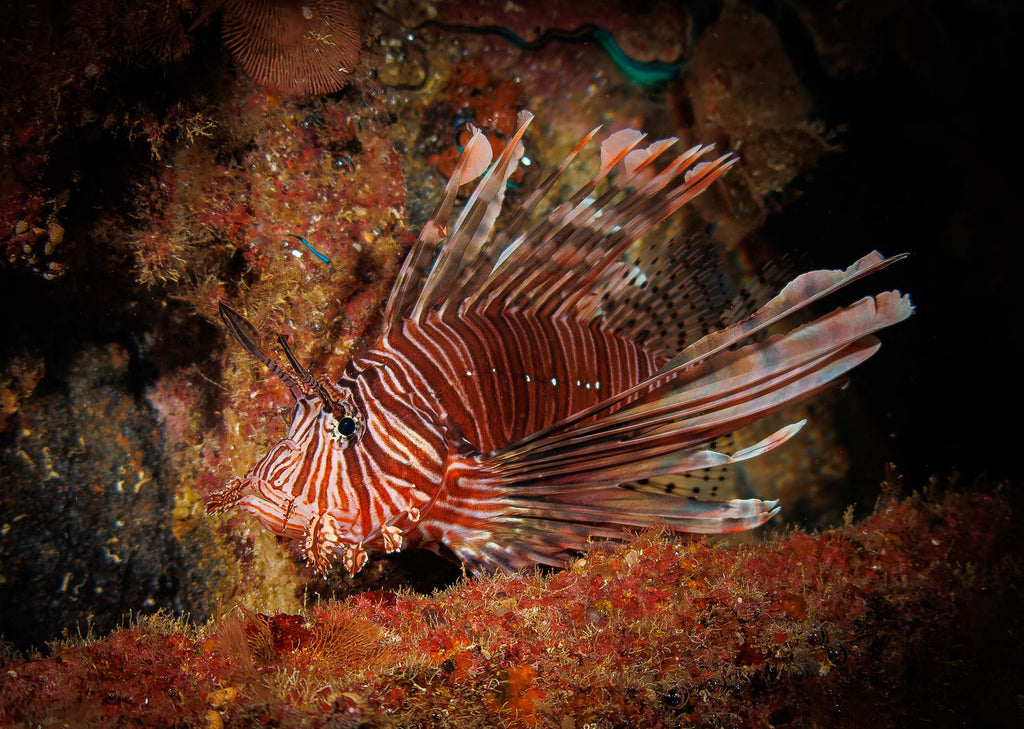
The DS51 strobes are easy to maneuver in tight macro shooting situations, but also powerful enough when you want to expand to wide angle.

The DS51 has enough capacitance to overpower the strong sunball and add color to the lionfish in the foreground. This photo was taken with a Tokina 10-17mm Fisheye lens which has an extremely wide field of view that can’t be covered with dedicated macro strobes.
The DS51 strobe has all the benefits of a macro strobe, with a compact size that makes it easy to position your strobes close to your lens for macro photography. This is combined with a powerful beam that provides an adequate spread of light that can be diffused for wide angle when shooting dual strobes.
Expandable TTL Compatibility
There’s no such thing as a one-size-fits all strobe or camera system. Many underwater photographers upgrade their camera system as their interests and creative needs change. A strobe like the DS51 can adapt to a huge variety of camera and housing systems because its TTL and triggering functionality can be expanded through a series of converters.
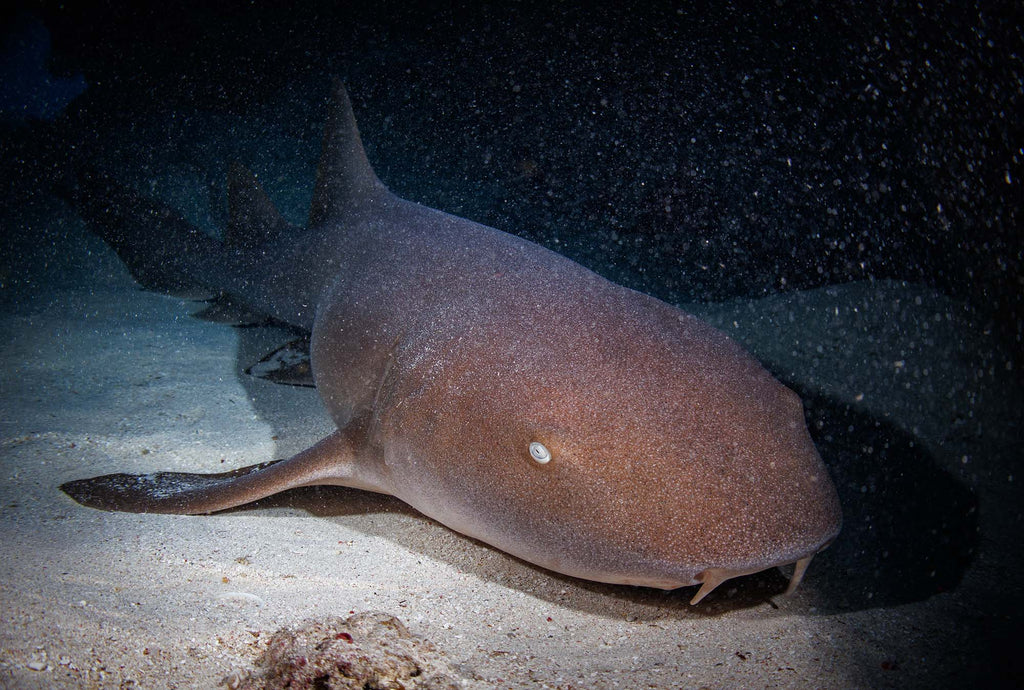
Get creative with your strobe positioning to highlight your subject with a more dramatic effect. This nurse shark was tucked under a small overhang which was emphasized with one strobe beam coming in from the left and one coming in from the top.
The DS51 is compatible with a wide variety of TTL converters for every major camera system, extension cords for unique strobe positioning, high sensitivity optical remote triggers, and expanding fiber optic options. The photos on this page were shot with our new TT5 Canon TTL Fiber Optic Transmitter.
Choosing a highly versatile strobe is an investment that will continue to pay off throughout your entire underwater photography career.
Simple Battery Compartment
There is one type of battery that is prolific across the world and can be easily purchased in a pinch if necessary. That’s the humble AA cell. The DS51 is powered by four AA batteries. Use high quality rechargeable Eneloop Pro batteries to enjoy more flashes and faster recycle time compared to disposable alkaline cells.

The DS51 can keep up with faster moving subjects like this turtle floating high above the reef in Grand Cayman.

When you come face-to-face and the subject is almost touching the front of your dome port it’s essential to be able to light it from both sides with two strobes for accurate color representation.
The battery compartment has a visible o-ring seal and is perhaps the only one on the market that requires virtually no maintenance—you don’t even need to remove or lubricate the o-ring.
Control Interface
When you want to adjust the strobe’s power setting it’s done by a simple control knob right on the back of the strobe. The switch includes a TTL setting (for use with compatible TTL converters), Full power, and 5 fractional powers in half-stop increments. The fractional powers range from -0.5 stop which is 75% power to -2.5 stops which is 12.5% power.
These shots were taken with TTL automatic exposure, which largely eliminates the needs to change your strobe settings underwater. Every current digital camera supports TTL strobe exposure in the camera’s manual exposure mode, which is an incredibly powerful combination for underwater shooting.
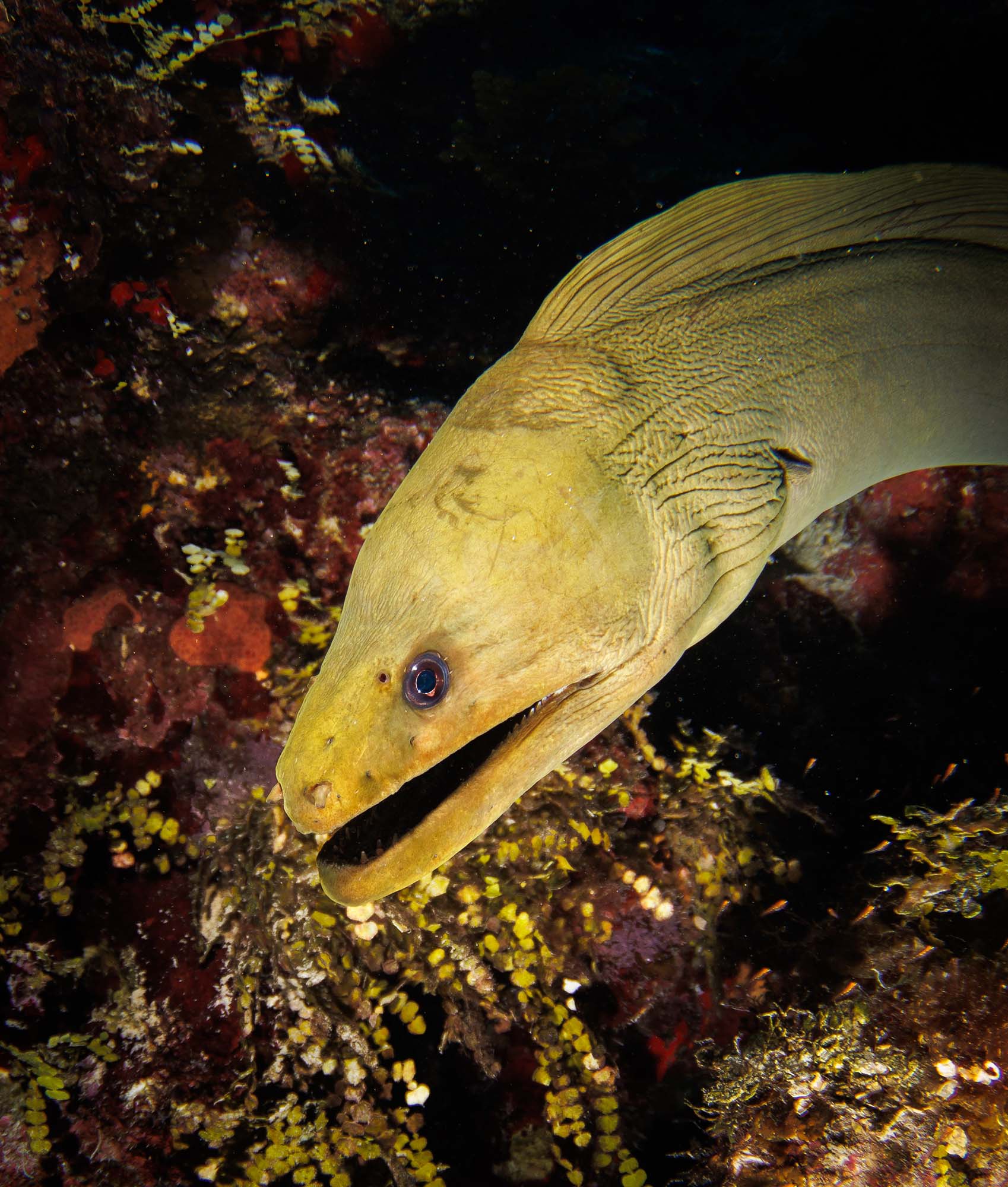
We were surprised to see this huge green moray eel free-swimming across the reef. Dual DS51 strobes created virtually no drag moving through the water, making it easier to swim out in front and shoot it head-on.
The full line of DS Link TTL Converters for every major camera manufacturer provides accurate automatic exposure by an electrical connection between the camera and the strobe. DS51 strobes can also be triggered in TTL mode over a fiber optic connection with Canon, OM System/Olympus, and Panasonic systems.
Final Thoughts
For the vast majority of underwater photography, we appreciate the simplicity and ease of a compact, streamlined kit. Shooting with a mid-range system encourages us to get in the water to shoot more often, because setting it up is faster and less involved. A compact system makes it significantly easier to kick over to a shot or swim alongside a moving subject.
There will always be a place for professional grade strobes with a round flashtube, ultra-wide angle of coverage, and high-powered rechargeable battery pack. These are essential for burst shooting (high speed continuous) and to cover a fisheye lens on a full frame sensor.
On the compact end, you can definitely go too compact and limit the number of photo opportunities you can take advantage of. A dedicated macro strobe won’t do you any good with a fisheye lens or wide angle wet lens. As they say in climbing, it’s better for your rope to be 50 feet too long rather than 50 feet too short.
For most of what we do, the DS51 strobes are just-right-sized for our underwater adventures.
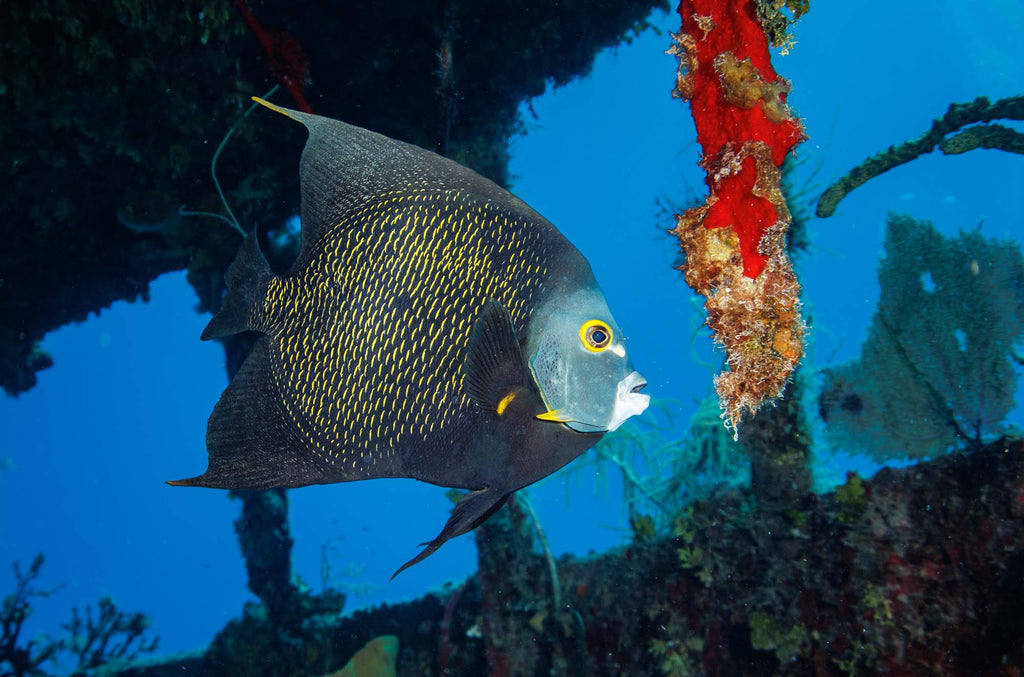
There’s a hugely diverse range of things to shoot underwater, from tiny insect-size creatures to big animals and wrecks. When you’re trying to streamline your gear it’s important to carry lighting that can keep up with anything you encounter.
Featured in this Story
200DLM/D Underwater Housing and Canon EOS R100 Camera Deluxe Kit # 69752
DS51 II 50Ws TTL Underwater Strobe # 40051
Compact Ball Arm V2 for Quick Release Handle # 40781
TT5 Canon TTL Fiber Optic Transmitter # 44701
Red Cable Grip for Housings # 4080.09
Additional Reading
DS51 Battery Compartment // The 3 Things You Need to Know [VIDEO]
Mixing Different Sized Strobes for Underwater Photography [VIDEO]
5 Situations Where You Need a Strobe Underwater [VIDEO]
RC1 TTL Receiver for DS Strobes & Olympus TG-5 Camera Review
The Myth of TTL Strobe Exposure Underwater
Manual Camera Exposure VS Manual Strobe Exposure for Underwater Photography [VIDEO]
Get Creative: Unconventional Handle and Strobe Setups
 Jean Rydberg, daughter of Ike Brigham, became President & CEO of Ikelite in 2006. Prior to that, she wisely pursued a degree in Astronomy & Astrophysics to prepare herself for the challenges of running a technology-driven manufacturing business with global distribution. Jean fully embraces the need to travel outside of her hometown of Indianapolis to experience good diving. She believes that any camera is capable of amazing results in the right hands, and anyone can become a great photographer given the right advice. When she's not working she's spending time with her husband, cats, and two daughters (though not necessarily in that order).
Jean Rydberg, daughter of Ike Brigham, became President & CEO of Ikelite in 2006. Prior to that, she wisely pursued a degree in Astronomy & Astrophysics to prepare herself for the challenges of running a technology-driven manufacturing business with global distribution. Jean fully embraces the need to travel outside of her hometown of Indianapolis to experience good diving. She believes that any camera is capable of amazing results in the right hands, and anyone can become a great photographer given the right advice. When she's not working she's spending time with her husband, cats, and two daughters (though not necessarily in that order).
 John Brigham is the Vice President & head of product development at Ikelite. He was born with a flair for design and an entrepreneurial spirit as son of Ikelite founder Ike Brigham. He worked his way up in the business and is a natural fit in the R&D side of things. John dives the equipment as much as possible to test product and put himself in the "fins" of the user. You may also find him on the other end of an email or phone call when you reach out for product advice and support. When he's not underwater he's flying drones, setting off rockets, training his German Shepherd "T2", and spending time with his family.
John Brigham is the Vice President & head of product development at Ikelite. He was born with a flair for design and an entrepreneurial spirit as son of Ikelite founder Ike Brigham. He worked his way up in the business and is a natural fit in the R&D side of things. John dives the equipment as much as possible to test product and put himself in the "fins" of the user. You may also find him on the other end of an email or phone call when you reach out for product advice and support. When he's not underwater he's flying drones, setting off rockets, training his German Shepherd "T2", and spending time with his family.











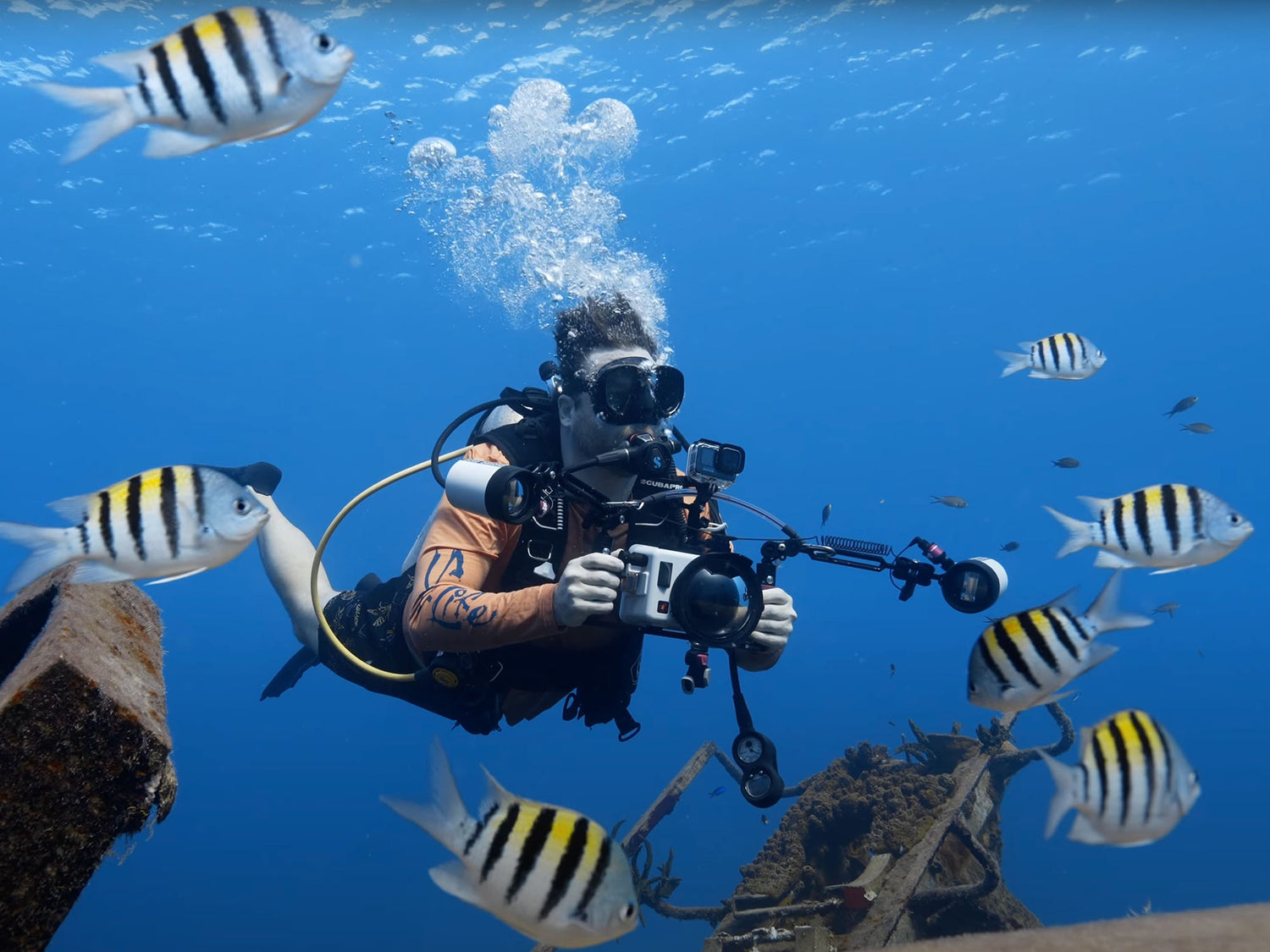

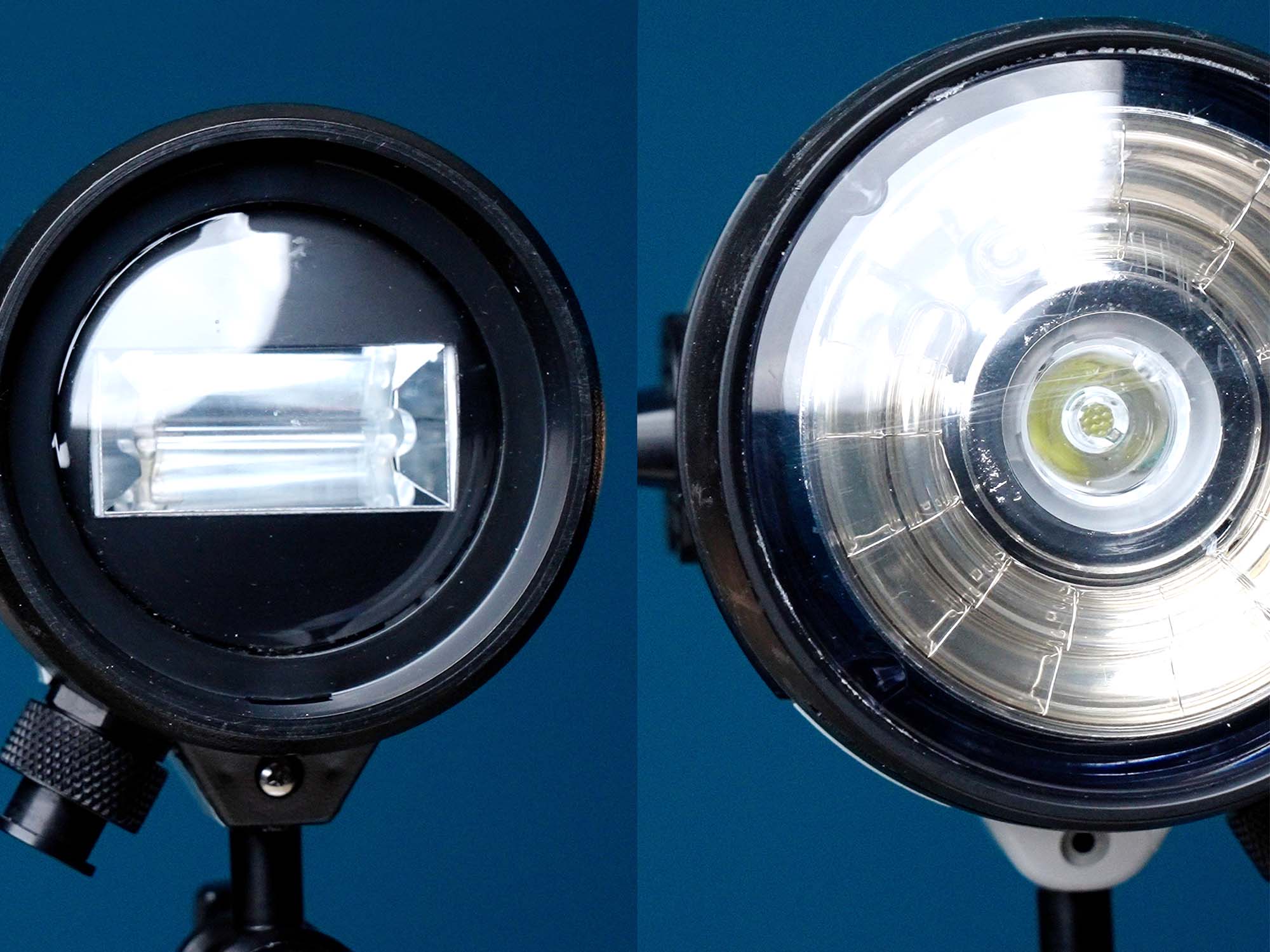
![My Floridian Ikelite System // Bryant Turffs' Underwater Photography Gear [VIDEO]](http://www.ikelite.com/cdn/shop/articles/byrant-turffs-ambassador-shoot-blog-cover_520x500_9223393e-b9a3-4a85-bd0d-8e32d45198e8.jpg?v=1734535903&width=520)